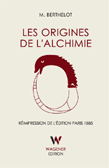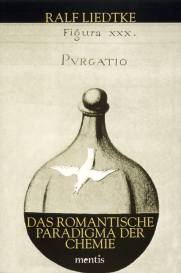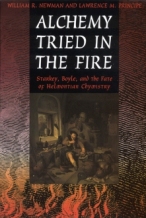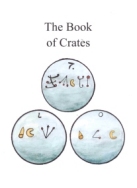|
|
Recent publications on alchemyThere are only a very few books issued each year on alchemy.Tilton, Hereward. The Quest for the Phoenix - Spiritual Alchemy and Rosicrucianism in the Work of Count Michael Maier (1569-1622). Walter de Gruyter, Berlin, 2003. ISBN: 3-11-017637-8 Abrégé de la Doctrine de Paracelse. ISBN: 2-911705-02-5 Editions de Massanne 990, Avenue des Garrigues 34190 Laroque, France massanne@wanadoo.fr http://www.massanne.com This is an edition of the book by Francesco Maria Pompeo Colonna, Abregé de la doctrine de Paracelse, et de ses archidoxes. Avec une explication de la nature des principies de chymie. Paris, d'Houry fils, 1724. A new reprint of the important Italian book on alchemy by Carbonelli. Giovanni Carbonelli Sulle fonti storiche della Chimica e dell'Alchimia in Italia (1925) con uno scritto di Massimo Marra ril. in tela, 274 pp., con ill. 75 ? - [88-88097-25-2] LA FINESTRA EDITRICE piazza Grazioli, 12 38015 Lavis (TN) Tel. 178.608.16.43 (answering service) Fax 178.608.16.43 The first edition of the classic study "Sulle fonti storiche della chimica e dell'alchimia in Italia" by Giovanni Carbonelli, focused on the alchemical manuscripts of the Italian libraries, was printed in Rome in 1925. The "Edizioni La Finestra" (Trento, Italy) has now made a reprint of this very useful book. The Carbonelli's book, probably, is the most exhaustive exploration of the alchemical manuscripts stored in the Italian libraries. A very large number of manuscripts are examined, and the study is enriched with a lot of illustrations, transcriptions and Italian translations. This edition features an introductory study by Massimo Marra, focused on the development of the alchemical studies in the XIXth century esoteric milieu and in the contemporary scientific academic establishment. The history of this two aspects of alchemy, according to a historical-positivistic point of view or an esoteric one, is examined in order to identify the most evident influences on the Carbonelli's research. This introductory study also offers a biographical note about Carbonelli. This is the first reprint of this very important study. - Marco Albertazzi Reprint of a key work by Berthelot.  M. Berthelot
Les Origines de L'Alchimie M. Berthelot
Les Origines de L'AlchimieNeudruck der französischen Ausgabe Paris 1885. Wagener Edition, Melle 2003 449 Seiten.Format 205 x 135 mm. Hardcover mit Fadenheftung. Papier und Druck sind alterungsbeständig. ISBN: 3-937283-00-5 Preis: EUR 68,00 Zum Inhalt: Les sources: Les origines mystiques - Sources égyptiennes, chaldéennes, juives, gnostiques - Les témoignages historiques - Les papyrus de Leide - Les manuscrits grecs des bibliothèques Les personnes: Les alchimistes oecuméniques - Les alchimistes mythiques - Les alchimistes pseudonymes - Les alchimistes grecs proprement dits Les faits: - Les métaux chez les Egyptiens - La teinture des métaux Les théories: - Théories grecques - Théories des alchimistes et théories modernes. 
Liedtke, Ralf. Das romantische Paradigma der Chemie. Friedrich von Hardenbergs Naturphilosophie zwischen Empirie und alchemistischer Spekulation. Mentis, Paderborn, 2003. ISBN 3-89785-287-X Friedrich von Hardenberg [1772-1801], better known as the romantic poet 'Novalis', a contemporary of Goethe, is usually thought of as a mystic, and one might be excused for thinking that the main influences on his work and intellectual development would be religous and mystical writings. This book by Ralf Liedtke, extensively documents how Novalis had also made an extensive study of chemistry, geology and alchemy, thus extending our picture of the sources of Novalis' work. Liedtke gives us a substantial survey of the evolution of alchemical and chemical ideas up till the late 18th century, and thus we can now form a more complete view of Novalis. Students of alchemy will know the allegorical fairy tale that Novalis placed at the centre of his novel Heinrich von Ofterdingen and this book allows us to see from where Novalis garnered his ideas on alchemy.  Newman, William R. and Principe, Lawrence M.
Newman, William R. and Principe, Lawrence M. Alchemy tried in the fire. Starkey, Boyle, and the Fate of Helmontian Chymistry. University of Chicago Press. 2002. This book explores the notebooks of the seventeenth century alchemist George Starkey. It reveals his methods of working in the laboratory, and the way in which he refined and changed his alchemical experiments in the light of the results he obtained and the underlying philosophical ideas which shaped his alchemical work. Through their meticulous research into the source documents the authors demonstrate that many of the principles and laboratory practices characteristic of modern chemistry were already present in alchemy. Newman and Principe promise to publish the Starkey notebooks with their detailed analysis of his methods.  The Book of Cratès
The Book of CratèsHermetic Research Series No. 12. 2003 The Book of Cratès is a ninth century alchemical text in Arabic, now preserved in only one extant manuscript, is not, in fact, a work of Arabic alchemy, although it has a short preface obviously written by an Islamic editor, and there is a short section at the end which mentions Khalid ben Yezir, who is supposed to have introduced alchemy to Islam through meeting the legendary Morienus, as recounted in the Liber de compostione alchimiae. The text of the Book of Cratès is actually of Greek origin, much of it being imbued with the spirit of Graeco-Egyptian alchemy. At one point it quotes one of the precepts of Democritus "Nature delights in Nature", and those with a deep knowledge of Greek alchemy will find quotations or borrowings from Bolos of Mendes (second century B.C.), and probably from Ostanes. Ostanes was especially obsessed with the need for secrecy and this is a strong theme of the narrative of the Book of Cratès. Ostanes also in one of his works The book of the Thirty Chapters, uses the idea of falling asleep and being taken up in a dream where he meets an old man (a Hermes Trismegistus figure), as we find in the Book of Cratès. Whatever the origins of this little book the ideas it presents are those which still shaped the alchemy of Northern Europe through the early modern period and well into the 17th and even 18th centuries. The use of allegory and the frustration of having the secret concealed by the writer of a text, common themes in the later period, are so cogently presented in this 9th century work. |